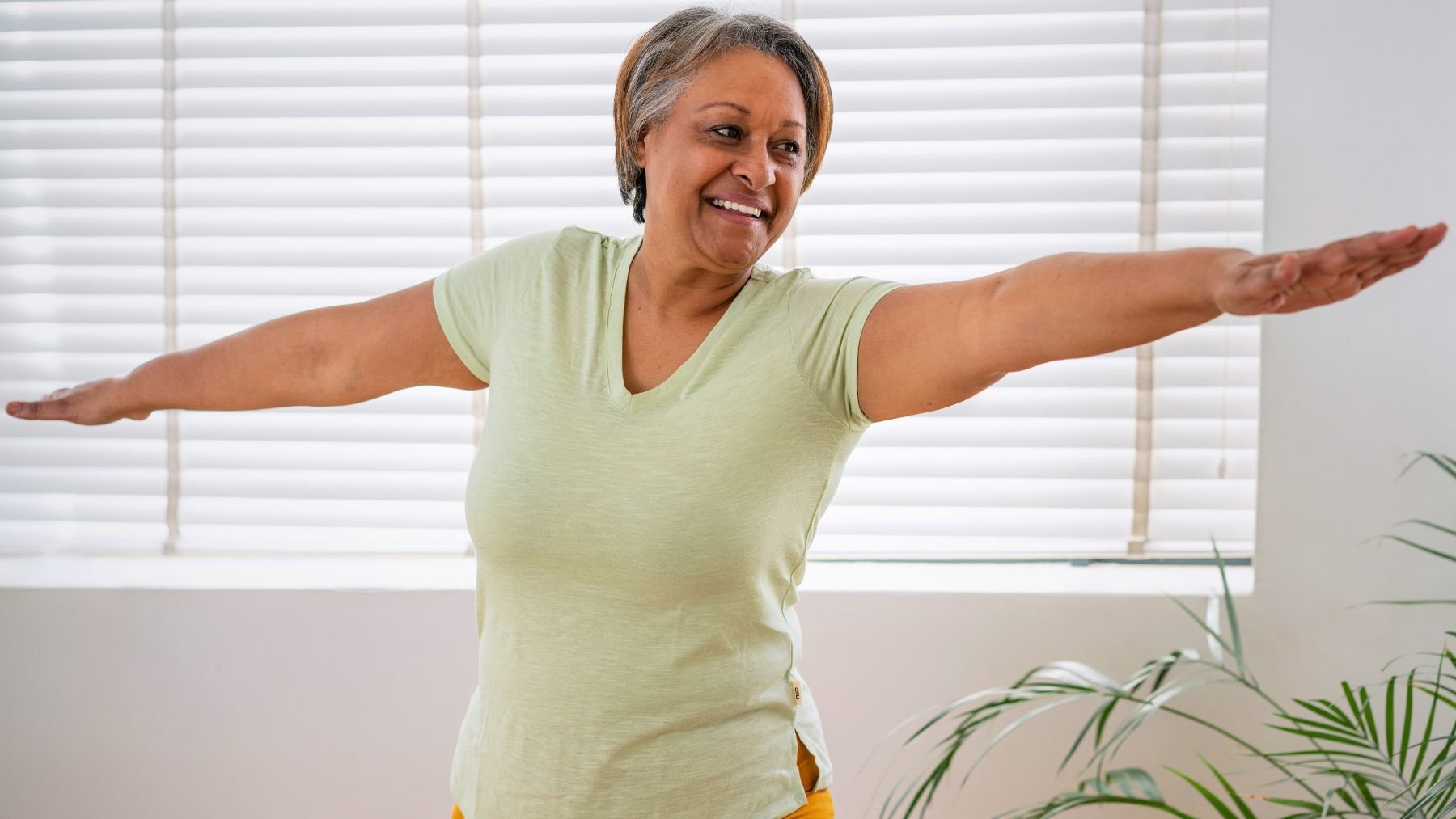If you are over 65 and determined to enhance your balance and flexibility, a remarkable option besides walking and swimming awaits you. Safe, accessible, and easily performed from a sturdy chair, chair yoga stands out as a low-impact practice that’s perfect for seniors.
Let’s examine the reasons why chair yoga can be effective for older adults seeking improved stability and ease of movement. We’ll explore its underlying mechanics and the diverse benefits it brings to the body, and offer practical tips to begin safely.
Why chair yoga builds better balance and flexibility for retirees
Chair yoga is an adapted form of yoga designed for seated positions or with the supportive aid of a chair. With slow, deliberate movements paired with mindful breathing, it concentrates on the key body areas seniors require to improve stability and mobility. It shares similarities with tai chi, gentle stretching exercises, and even pilates for older adults, all of which contribute to improved posture and balance.
By utilizing seated or supported poses, chair yoga minimizes strain on joints, bones, and muscles compared to traditional standing exercises, making it particularly beneficial for individuals with arthritis, osteoporosis, or general stiffness. Through controlled stretches and sustained holds, you can gradually widen your range of motion so that everyday tasks become more fluid.
In addition to its physical advantages, the deliberate focus on coordinated breathing and intentional movement helps to calm the nervous system. This heightened state of mindfulness promotes more restorative sleep, a better mood, and also boosts your motivation.
How to get started with this exercise after 65
Starting with chair yoga is accessible and straightforward, but it’s important to proceed with caution. Always consult your doctor first, especially if you have existing health concerns, and once you are cleared, follow these guidelines:
- Start slow and simple: Begin with brief sessions of 10-15 minutes, 2 to 3 times per week. Master a few fundamental poses before gradually increasing the duration or complexity of your practice.
- Choose the right chair: Select a sturdy, non-wheeled chair with a firm seat, and place it on a non-slip surface to ensure stability. Position your feet flat on the floor, and, if needed, use pillows for additional back support.
- Focus on form, not depth: Monitor your posture and alignment in each position. The objective is not to achieve extreme stretches but to move safely and savor a gradual opening of the body. Refrain from pushing into discomfort or pain.
- Breathe deeply: Synchronize your breathing with your movements by inhaling to prepare and exhaling as you gently deepen each stretch.
- Use available resources: Look for beginner-friendly classes specifically designed for seniors at community centers, senior centers, or gyms. There are also free or low-cost online video tutorials tailored to older adults, where a qualified instructor can provide guidance to ensure proper technique.
- Listen to your body: Respect your body’s limits. If you experience sharp pain, dizziness, or shortness of breath, stop the activity immediately.
Regular chair yoga practice lays a solid foundation for improvements in balance and flexibility, empowering you to move with increased confidence and ease. In addition to these guidelines, exploring related exercises such as water aerobics, tai chi, and adaptive stretching routines can enrich your fitness regimen.

